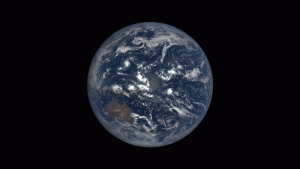Greetings fellow astrophiles,
The NASA News Service provides up-to-date announcements of NASA policy, news events, and space science. A recent selection of space science articles are provided below, including direct links to the full announcements. Those interested in receiving these announcements from NASA can subscribe to their service by sending an email to: hqnews-request@newsletters.nasa.gov?subject=subscribe
Space Station Crew Celebrates 15 Years Of Human Space Exploration In Low-Earth Orbit
RELEASE 15-157 (Click here for the full article) – 26 October 2015
All six members of the Expedition 45 crew aboard the International Space Station will participate in a news conference at 10 a.m. EST on Monday, Nov. 2 to mark the start of continuous work by humans aboard the space-based laboratory 15 years ago. The 30-minute news conference will air live on NASA Television and agency’s website.
Station Commander Scott Kelly and Flight Engineer Kjell Lindgren of NASA, Flight Engineers Mikhail Kornienko, Oleg Kononenko and Sergey Volkov of the Russian Federal Space Agency (Roscosmos) and Flight Engineer Kimiya Yui of the Japan Aerospace Exploration Agency will take questions from U.S., Russian and Japanese media during the news conference.
Due to time limitations, questions will be taken only from media participating in person at NASA’s Johnson Space Center in Houston or the agency’s Kennedy Space Center in Florida. International media accreditation for this event is closed.
…
For more information about the International Space Station and its crew, visit: http://www.nasa.gov/station
For NASA TV streaming video, schedule and downlink information, visit: http://www.nasa.gov/nasatv
Daily Views Of Earth Available On New NASA Website
RELEASE 15-199 (Click here for the full article) – 19 October 2015
NASA launched a new website Monday so the world can see images of the full, sunlit side of the Earth every day. The images are taken by a NASA camera one million miles away on the Deep Space Climate Observatory (DSCOVR), a partnership between NASA, the National Oceanic and Atmospheric Administration (NOAA) and the U.S. Air Force.
Once a day NASA will post at least a dozen new color images of Earth acquired from 12 to 36 hours earlier by NASA’s Earth Polychromatic Imaging Camera (EPIC). Each daily sequence of images will show the Earth as it rotates, thus revealing the whole globe over the course of a day. The new website also features an archive of EPIC images searchable by date and continent.
…
For daily images from EPIC, visit: http://epic.gsfc.nasa.gov/
For more information about the DSCOVR mission, visit: http://www.nesdis.noaa.gov/DSCOVR/
NASA Releases Plan Outlining Next Steps In The Journey To Mars
RELEASE 15-206 (Click here for the full article) – 8 October 2015
NASA is leading our nation and the world on a journey to Mars, and Thursday the agency released a detailed outline of that plan in its report, “NASA’s Journey to Mars: Pioneering Next Steps in Space Exploration.”
“NASA is closer to sending American astronauts to Mars than at any point in our history,” said NASA Administrator Charles Bolden. “Today, we are publishing additional details about our journey to Mars plan and how we are aligning all of our work in support of this goal. In the coming weeks, I look forward to continuing to discuss the details of our plan with members of Congress, as well as our commercial and our international and partners, many of whom will be attending the International Astronautical Congress next week.”
The plan can be read online at: http://go.nasa.gov/1VHDXxg
The journey to Mars crosses three thresholds, each with increasing challenges as humans move farther from Earth. NASA is managing these challenges by developing and demonstrating capabilities in incremental steps:
…
To learn more about NASA’s journey to Mars, including the agency’s latest scientific exploration of the Red Planet, visit: http://www.nasa.gov/topics/journeytomars/index.html
NASA Confirms Evidence That Liquid Water Flows On Today’s Mars
RELEASE 15-195 (Click here for the full article) – 28 September 2015
New findings from NASA’s Mars Reconnaissance Orbiter (MRO) provide the strongest evidence yet that liquid water flows intermittently on present-day Mars.
Using an imaging spectrometer on MRO, researchers detected signatures of hydrated minerals on slopes where mysterious streaks are seen on the Red Planet. These darkish streaks appear to ebb and flow over time. They darken and appear to flow down steep slopes during warm seasons, and then fade in cooler seasons. They appear in several locations on Mars when temperatures are above minus 10 degrees Fahrenheit (minus 23 Celsius), and disappear at colder times.
“Our quest on Mars has been to ‘follow the water,’ in our search for life in the universe, and now we have convincing science that validates what we’ve long suspected,” said John Grunsfeld, astronaut and associate administrator of NASA’s Science Mission Directorate in Washington. “This is a significant development, as it appears to confirm that water — albeit briny — is flowing today on the surface of Mars.”
…
More information about NASA’s journey to Mars is available online at: https://www.nasa.gov/topics/journeytomars
For more information about the Mars Reconnaissance Orbiter, visit: http://www.nasa.gov/mro
Cassini Finds Global Ocean In Saturn’s Moon Enceladus
RELEASE 15-188 (Click here for the full article) – 15 September 2015
A global ocean lies beneath the icy crust of Saturn’s geologically active moon Enceladus, according to new research using data from NASA’s Cassini mission.
Researchers found the magnitude of the moon’s very slight wobble, as it orbits Saturn, can only be accounted for if its outer ice shell is not frozen solid to its interior, meaning a global ocean must be present.
The finding implies the fine spray of water vapor, icy particles and simple organic molecules Cassini has observed coming from fractures near the moon’s south pole is being fed by this vast liquid water reservoir. The research is presented in a paper published online this week in the journal Icarus.
…
For more information about Cassini, visit: http://www.nasa.gov/cassini and http://saturn.jpl.nasa.gov










